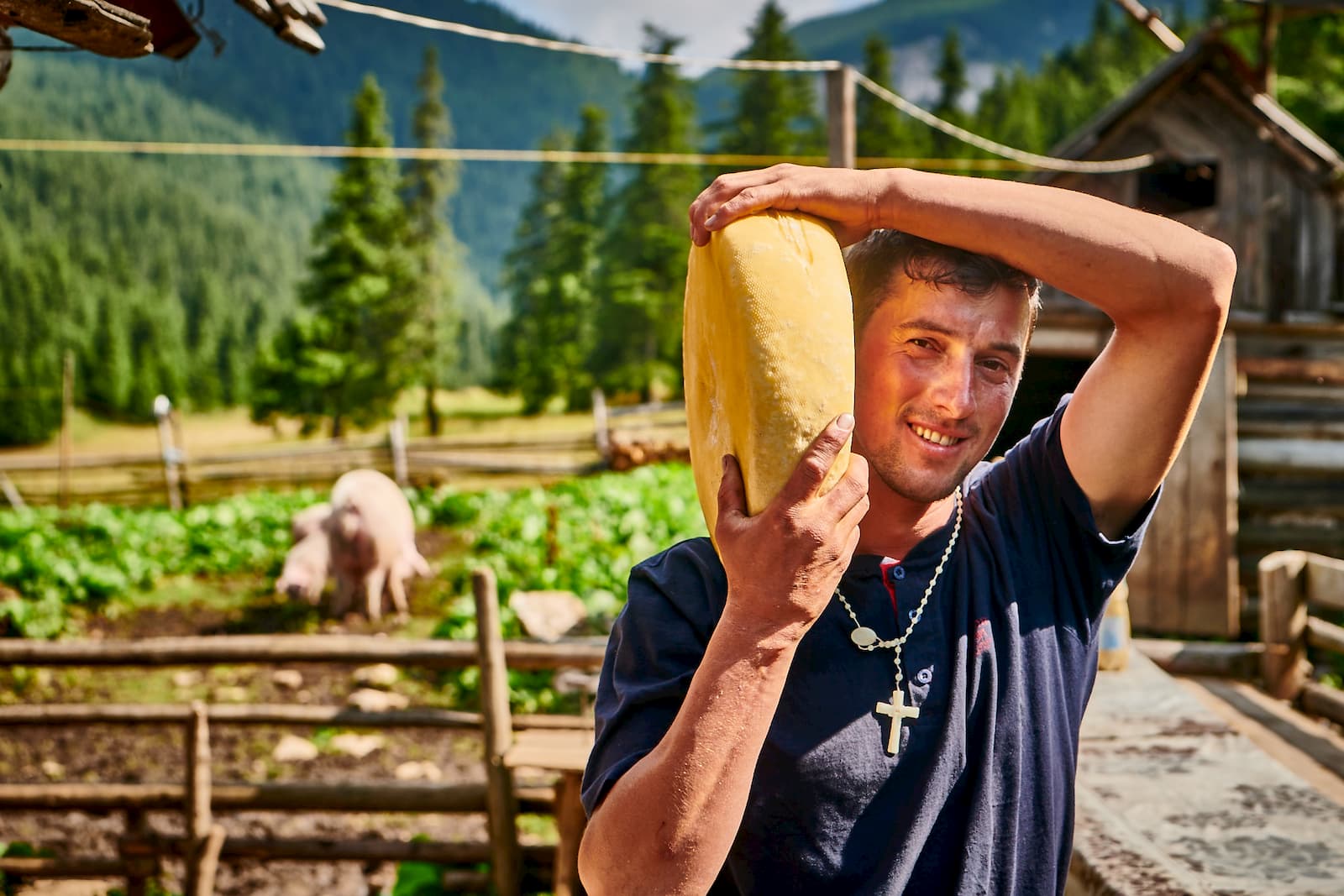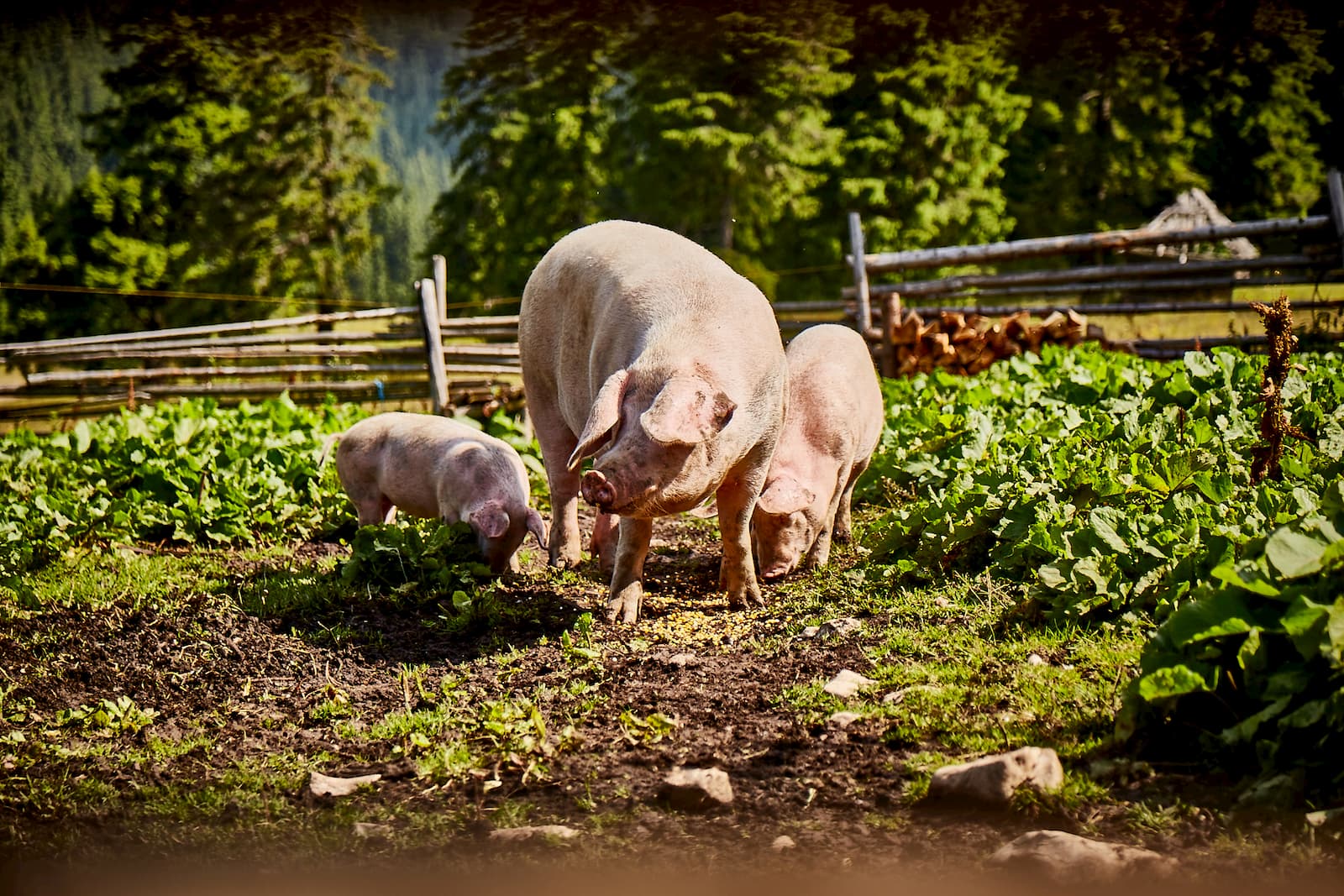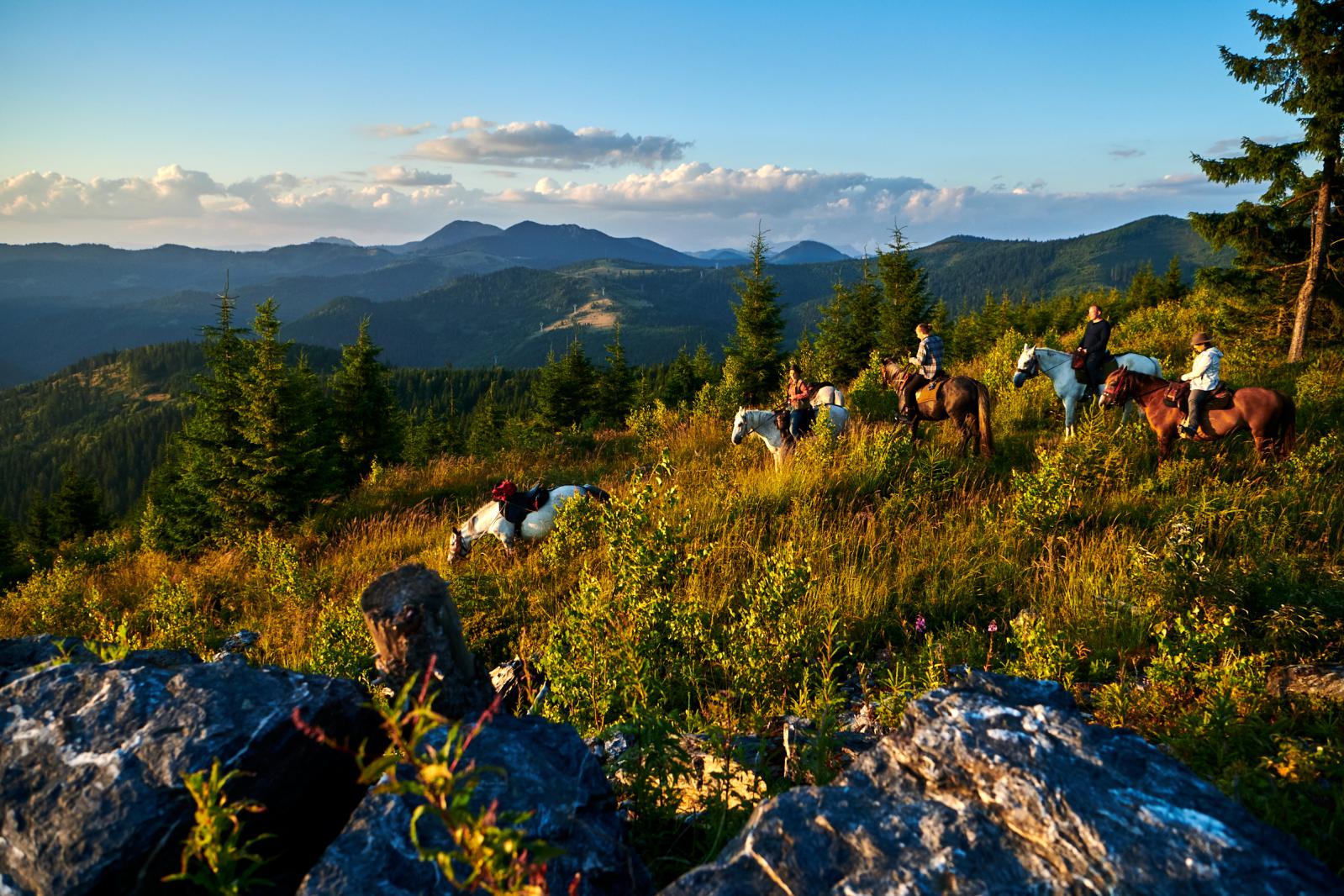Culture and History:
In Transylvania, time runs a little slower than in Western Europe. The rural region impresses with untouched mountain landscapes, dense forests, tranquil villages and fields that are cultivated with the help of oxen or horses. Since there is only little infrastructure, the best way to get around is by horse.

Our Hipparion Trail-Riding Ranch is located in the north of Hargita County in the Szekler Land. This region has been culturally and historically marked by different groups of Romanians, Hungarians, Armenians, the Transylvanian Saxons as well as numerous gypsy tribes which all used to settle here.
Until 1918, the Szekler land with its 13,000 sqm was Hungarian territory. However, with the Treaty of Trianon, the entire territory became part of Romania. Acting as a kind of border patrol, the people living in the Carpathians once defended the borders of the Great Hungarian Kingdom.

Nowadays, Szeklers are still closely connected with their traditions; colorful folk festivals in elaborate costumes and old crafts are an indispensable part of their everyday life.
In Szekler land you can still find many old, family-run craft businesses. Amongst others you might come across the famous shingle makers of Varság, the pottery guilds in Corond, or numerous weaving mills.
Linguistically the Szeklers have remained true to their roots; more than 85% of the population still speak Hungarian.

Nature and climate:
A low mountain range of volcanic origin, the Harghita Mountains, are rich in forests. They are home to a variety of flora and fauna that is unique in Europe. Their blooming herb and flower meadows, dense, mysterious primeval forests, that have hardly been entered by humans, are a paradise for species that have gone extinct elsewhere. Here, rare species such as the blue gentian, the silver thistle or the troll flower can be admired in their full splendor.
The fauna of the Eastern Carpathians is very diverse: capercaillie birds, eagles, wild cats, lynxes, deer and brown bears have found their habitat in the wide forests. Numerous mineral springs and peat bogs are natural features that make the Harghita Mountains a special and ecologically important nature reserve.
Spring in the Hargita Mountains usually begins rather late and reaches temperatures of up to 20 degrees Celsius. Summer is usually mild and pleasantly warm, with temperatures up to 28 degrees Celsius. Yet, it can cool down at night, especially in the higher altitudes. The long and mostly sunny autumn compensates the cold, snowy winter with a breathtakingly colorful Indian Summer of Romanian kind.

Discover the stunning landscapes of Romania on an adventure on horseback, Whatever the season, we look forward to seeing you.